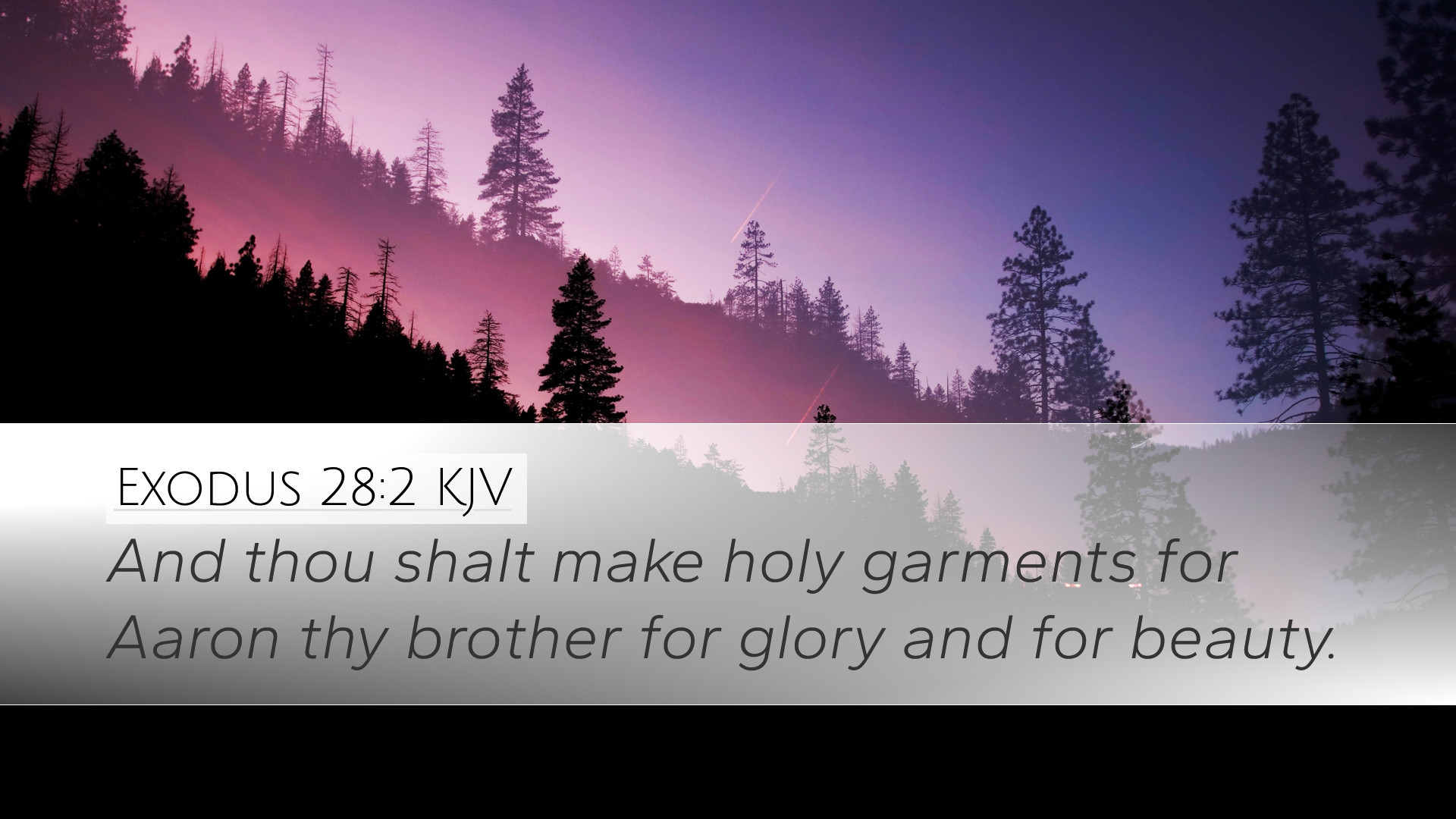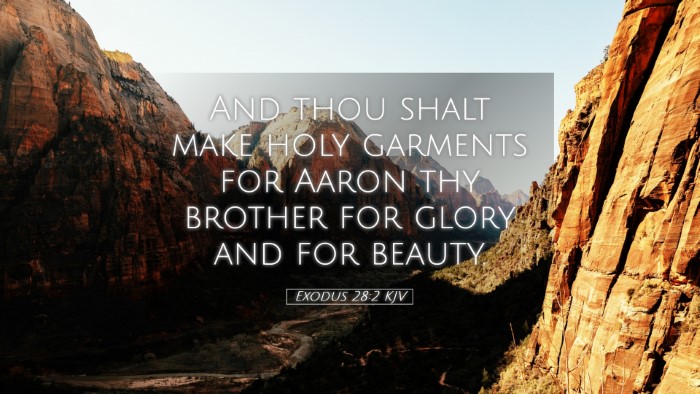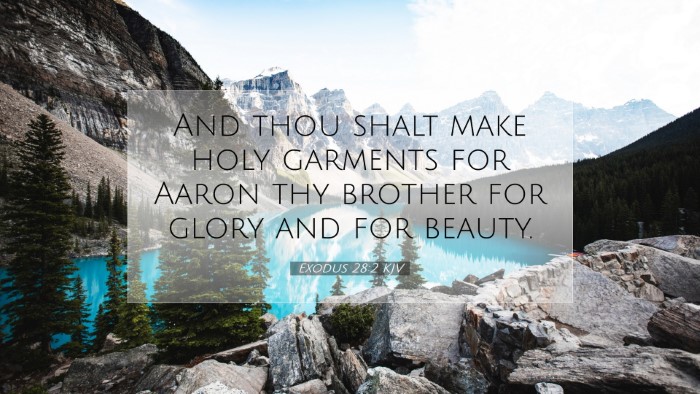Bible Commentary on Exodus 28:2
Bible Verse: "And thou shalt make holy garments for Aaron thy brother for glory and for beauty." (Exodus 28:2)
Introduction
The command to create holy garments for Aaron marks a pivotal point in the establishment of priestly duties and worship in Israel. This verse encapsulates God's intent to set apart Aaron and his descendants for sacred service, highlighting the significance of both the garments themselves and their symbolic representation of spiritual truths. In this commentary, we will draw from the insights of public domain commentaries to explore the implications and the depth of meaning found in Exodus 28:2.
The Purpose of the Garments
Commentators like Matthew Henry highlight that the garments are termed "holy," indicating their consecration for the service of God. This holiness signifies separation from the ordinary and an elevation to the sacred.
- Glory: The notion of "glory" speaks to the dignity and honor associated with the role of the high priest. It implies that the attire reflects the majesty of God and His calling in elevating Aaron among the people.
- Beauty: The "beauty" of the garments emphasizes the aesthetic appeal and craftsmanship involved, suggesting that the outward appearance is important in portraying the character of the God they serve.
Theological Implications
Albert Barnes points out that the garments serve not only a practical function but also a compensatory role in the high priest's ministry. They are emblematic of righteousness and holiness that ought to represent God's people when they enter into His presence.
This also introduces a theological principle valid beyond Aaron's time: the significance of being properly attired for service, which resonates in Christian thought where believers are reminded to "put on" Christ (Romans 13:14) and clothed with the garments of salvation (Isaiah 61:10).
The Symbolism of Each Garment
Adam Clarke elaborates on the various pieces of the high priest's attire discussed later in the chapter. Each piece serves a specific symbolic role:
- The Ephod: A rich, elaborate garment that represents strength and service; it is also seen as a means through which the high priest approaches God.
- The Breastplate: Engraved with the names of the tribes of Israel, symbolizing that the high priest bears the people before God, representing their sorrows, needs, and worship.
- The Robe of the Ephod: Its blue color symbolizes heavenly glory, reminding the priest of the divine nature of his calling.
- The Mitre: The headpiece also represents holiness and the office itself, set apart for God's work.
Implications for Ministry
The elaboration on priestly garments in Exodus serves as a lesson for current leaders and ministers. Matthew Henry notes that ministers today ought to approach their tasks with a sense of reverence and responsibility. Recognizing their high calling mirrors the regard in which God held the Levitical priesthood.
As leaders, they must remember that their spiritual garments are not physical attire but rather integrity, devotion, and a life reflecting the character of Christ.
Conclusion
Exodus 28:2 encapsulates the divine directive to adorn the high priest in a manner that reflects God's glory and beauty. Through holy garments, a direct connection is established between the mundane and the sacred, urging believers to acknowledge their roles within the greater narrative of salvation. The insights from Matthew Henry, Albert Barnes, and Adam Clarke remind us that the call to holiness is both a privilege and a responsibility, urging us to live in a way that honors God in our daily lives.


